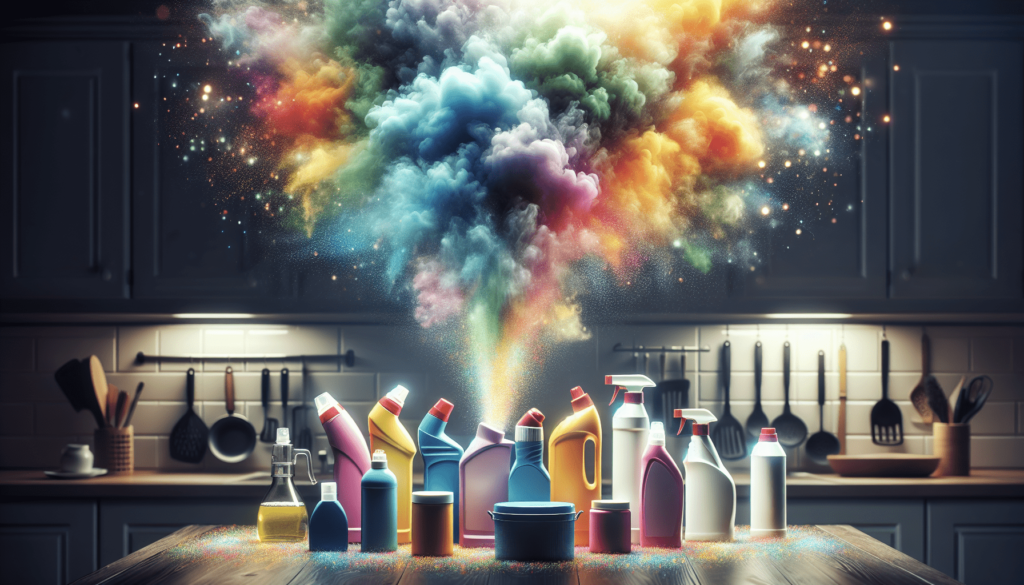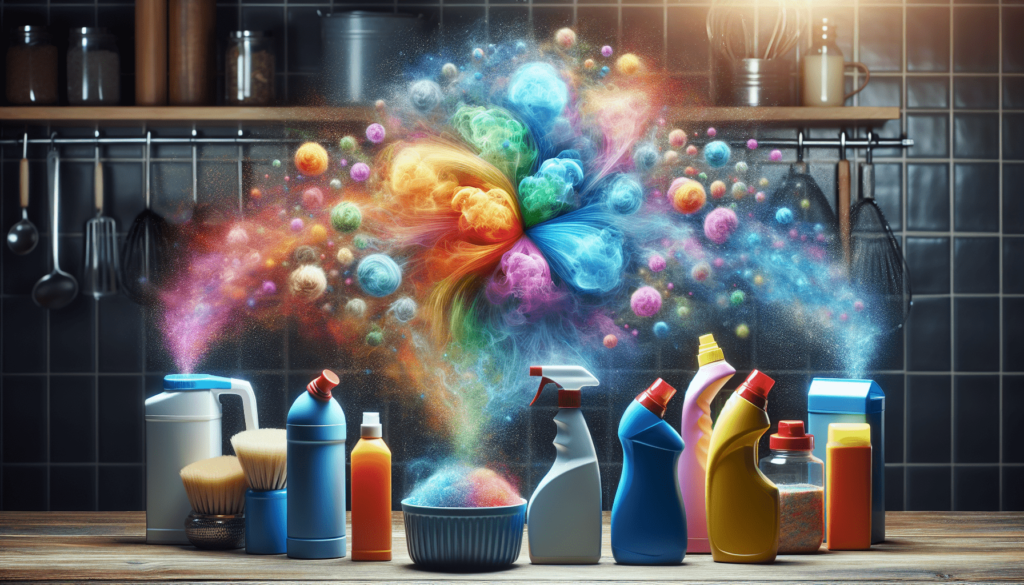Have you ever wondered why you suddenly start sneezing or experience a rash after cleaning your home? It might seem surprising, but many common household cleaners can trigger allergic reactions. These reactions can range from mild discomfort to more severe responses, and understanding the culprits behind them can help you manage or even prevent these unpleasant experiences.
Understanding Allergic Reactions
Allergic reactions are the body’s way of responding to substances it perceives as harmful, even if they’re not. When you come into contact with an allergen—such as certain chemicals found in cleaners—your immune system reacts. This reaction can manifest in various ways, including skin irritations, respiratory problems, or more severe symptoms such as swelling and difficulty breathing.
The Immune System’s Role
Your immune system is like a highly trained defense network, always on guard to protect you from threats. In some cases, the immune system mistakenly identifies harmless substances as dangerous invaders. This mistake triggers the production of antibodies, which in turn release chemicals like histamine into your body. The release of these chemicals is what causes allergy symptoms.
Common Symptoms of Allergic Reactions
Allergic reactions can vary significantly from one person to another. Common symptoms include:
- Skin Reactions: Redness, itching, hives, or dermatitis.
- Respiratory Issues: Sneezing, coughing, nasal congestion, or difficulty breathing.
- Eye Irritation: Watery, itchy, or red eyes.
- Digestive Issues: Nausea, vomiting, or diarrhea in some cases.
Understanding these symptoms can help you identify if you’re having an allergic reaction to a particular cleaner.
The Culprits: Ingredients in Household Cleaners
Many household cleaners contain chemicals designed to remove dirt, grime, and bacteria. However, some of these chemicals can be harsh on both the home’s residents and the surfaces they’re meant to clean. Here are some common ingredients you might find in household cleaners that could cause allergic reactions:
Ammonia
Ammonia is often used in glass and window cleaners due to its streak-free shine. However, ammonia fumes can irritate your respiratory tract, leading to symptoms such as coughing or wheezing. Prolonged exposure can exacerbate respiratory conditions, especially asthma.
Bleach
Bleach is a powerful disinfectant found in many cleaning products. While effective in killing germs, bleach can be quite irritating. Inhalation of bleach fumes can cause respiratory issues, while contact with skin may result in burns or rashes.
Fragrances
Many people love a freshly cleaned house with a pleasant scent, but those fragrances can be a source of allergies. Fragrances are often complex mixtures of synthetic chemicals, some of which might trigger allergic reactions. If you experience symptoms after using scented products, consider switching to fragrance-free alternatives.
Formaldehyde
This chemical is a preservative in many cleaning products. Formaldehyde can cause skin, eye, and throat irritation. It’s also a known carcinogen, which means that prolonged exposure could potentially increase cancer risk.
Triclosan
Found in some antibacterial soaps and detergents, triclosan can disrupt hormone function and contribute to skin allergies. Its widespread use has raised concerns, prompting some manufacturers to remove it from their products.

Recognizing and Testing for Allergies
If you suspect a cleaning product is causing your allergies, it’s essential to identify the specific allergen. This step can help you avoid the culprit and alleviate symptoms.
Patch Testing
One method for identifying allergens is patch testing, where small amounts of potential allergens are applied to your skin under adhesive patches. These remain in place for a few days to observe any reactions. Consulting with a dermatologist or allergist can facilitate this process and help you pinpoint the exact cause of your symptoms.
Keeping a Symptoms Diary
Tracking your symptoms in a diary can be a helpful tool in identifying patterns and potential triggers. Record when symptoms appear, what products you’ve used, and any environmental factors that might be relevant. This documentation can be invaluable to healthcare providers when trying to diagnose an allergy.
Prevention and Management
Preventing allergic reactions from household cleaners involves careful selection and usage of products. Here are some strategies to reduce the risk:
Choose Safer Alternatives
Opting for natural or hypoallergenic cleaners can reduce the chance of an allergic reaction. Look for products with fewer ingredients and avoid those with known irritants. You might consider using vinegar, baking soda, or essential oils as cleaning agents, which can be effective yet gentle alternatives.
Proper Ventilation
Ensuring your cleaning area is well-ventilated can minimize exposure to potentially harmful fumes. Open windows and doors, and consider using fans to help circulate air. This precaution can significantly reduce respiratory irritation.
Gloves and Protective Clothing
Wearing gloves and protective clothing can help protect your skin from coming into contact with allergens. This barrier can prevent irritations or reactions, especially when using products known to be harsh on the skin.
Test Products Before Full Use
Before applying a new cleaning product throughout your home, test it on a small, inconspicuous area. This patch test can help you determine if the product will cause an allergic reaction before it becomes a more significant issue.

When to Seek Medical Help
While most allergic reactions to household cleaners are mild, it’s crucial to recognize when professional medical advice is necessary. If you experience severe symptoms such as shortness of breath, swelling, or anaphylaxis, seek medical attention immediately. These symptoms can be life-threatening and require urgent intervention.
Long-term Management
If you consistently experience allergic reactions to cleaning products, working with an allergist can provide long-term solutions. You may require allergy testing and immunotherapy to develop a tolerance over time. An allergist can also guide you in modifying your cleaning routine to minimize exposure to irritants.
Creating a Safer Cleaning Environment
Incorporating safe cleaning practices not only protects you but also benefits everyone in your household. Here’s how you can create a cleaner yet safer environment:
Education and Awareness
Educate everyone in your household about the potential risks of certain cleaning products and the symptoms of allergic reactions. Being aware can lead to more conscientious product usage and quicker responses if a reaction occurs.
Customizing Cleaning Routines
Adjust your cleaning routine to minimize exposure to allergens. For instance, schedule cleaning when others are out of the house or choose specific times when adequate ventilation is possible. Use products that have been tested and deemed safe for those with allergies.
Regular Maintenance
Maintaining a clean home can reduce the need for strong cleaning products. Regular dusting, vacuuming, and wiping surfaces with water can help keep allergens at bay, reducing the buildup of dirt and germs that often necessitate harsher cleaners.
Storage and Labelling
Store cleaning products safely and ensure they are well-labeled. This practice prevents accidental misuse and allows quick identification and avoidance of products known to cause reactions. Keeping products out of reach of children is also essential for their safety and well-being.
DIY Cleaning Solutions
Consider making your own cleaning solutions using simple, non-toxic ingredients. Here’s a table with some DIY cleaner recipes:
| Purpose | Ingredients | Instructions |
|---|---|---|
| All-purpose | Vinegar, water, and lemon or essential oil | Mix equal parts vinegar and water, add a few drops of lemon for scent, and use as needed. |
| Glass cleaner | Rubbing alcohol, vinegar, and cornstarch | Combine 1 cup of rubbing alcohol, 1 cup of vinegar, and 1 tablespoon of cornstarch. Shake before use. |
| Scrub cleaner | Baking soda and water | Mix baking soda with water to create a paste. Apply to surfaces and scrub gently. |
Environmentally Conscientious
Using eco-friendly products is beneficial for personal health and the environment. By choosing products with natural ingredients, you contribute to a healthier planet. Labels such as “biodegradable,” “non-toxic,” or “eco-friendly” can guide you toward safer options.
Conclusion
Understanding and managing allergic reactions to household cleaners starts with awareness. By recognizing the ingredients and symptoms associated with these reactions, you can make informed decisions that protect your health. Implementing preventative measures, seeking medical help when necessary, and opting for safer alternatives are all essential steps in creating a safer home. Remember, your health and comfort should always come first as you maintain a clean, allergen-free living environment.
